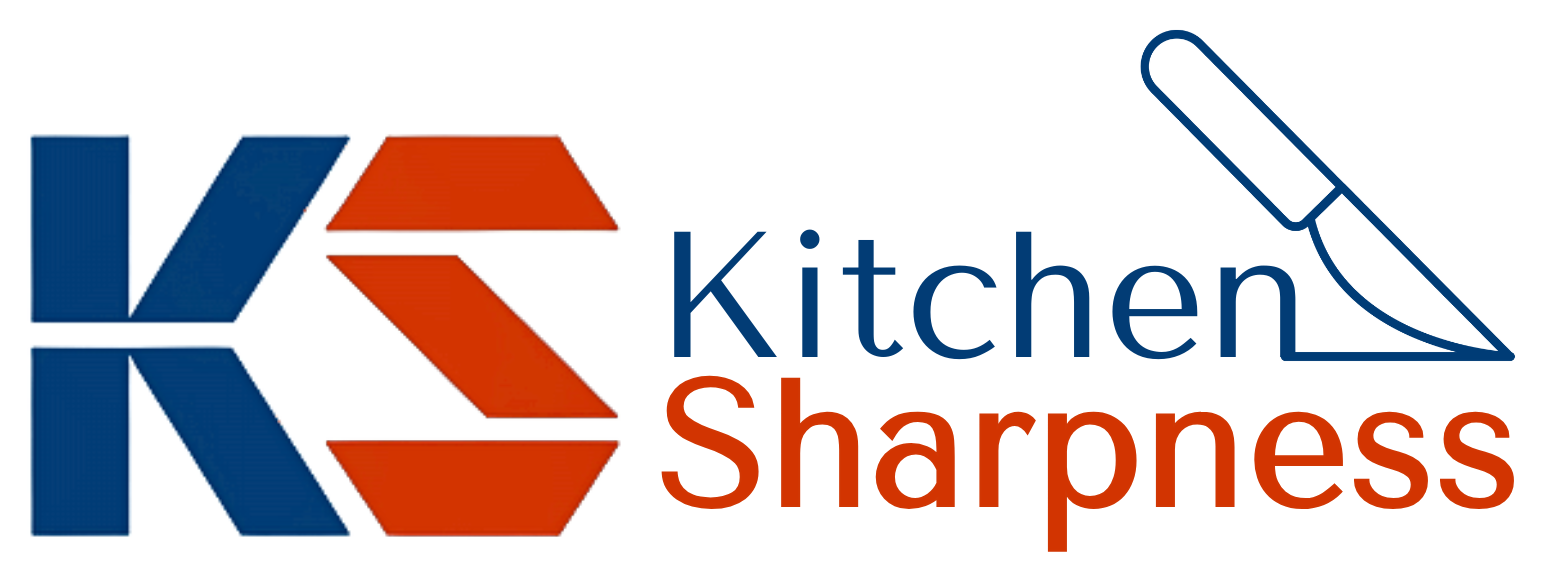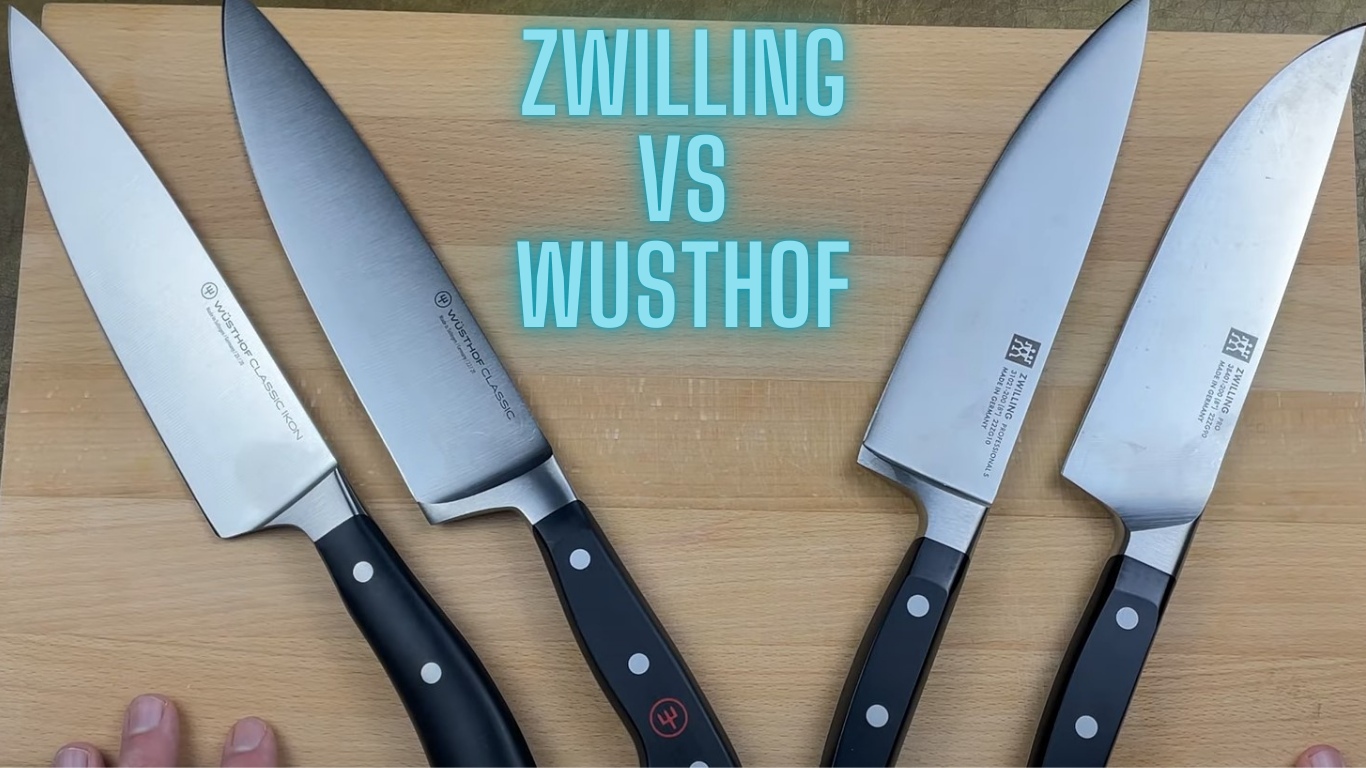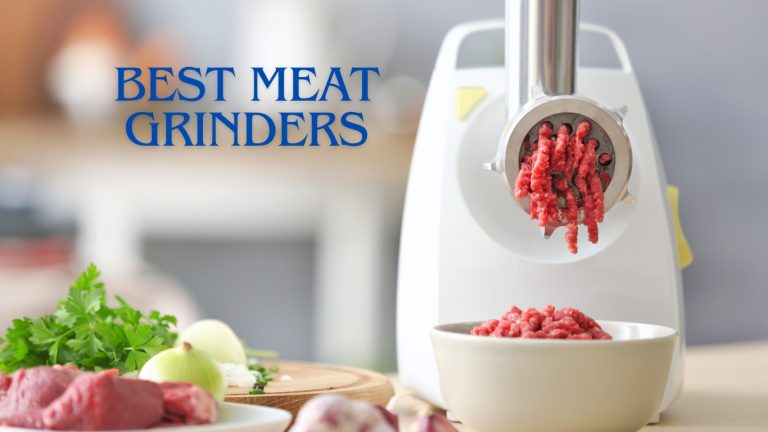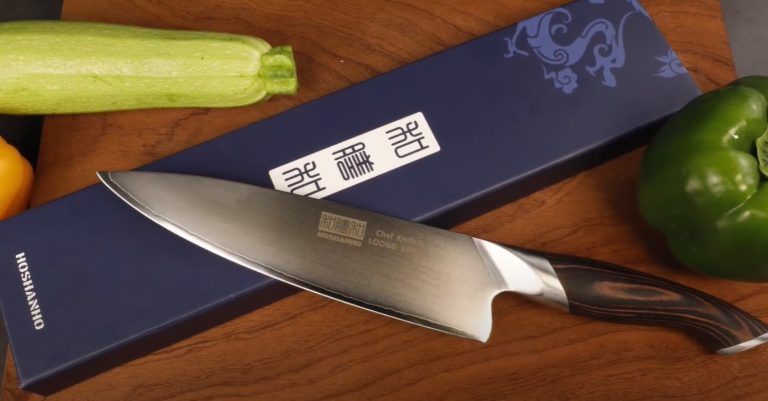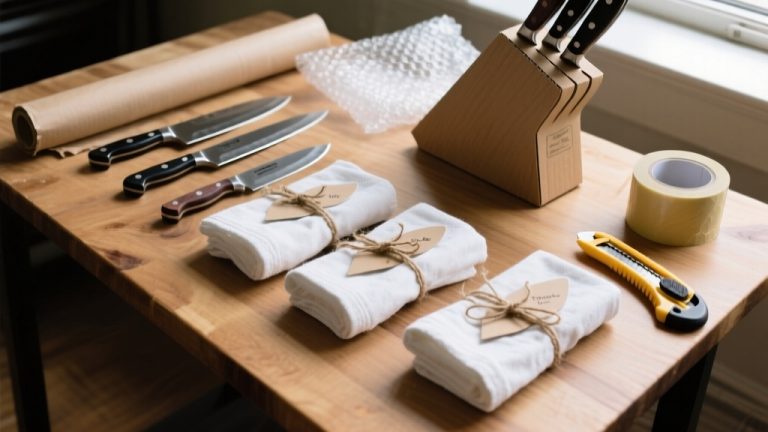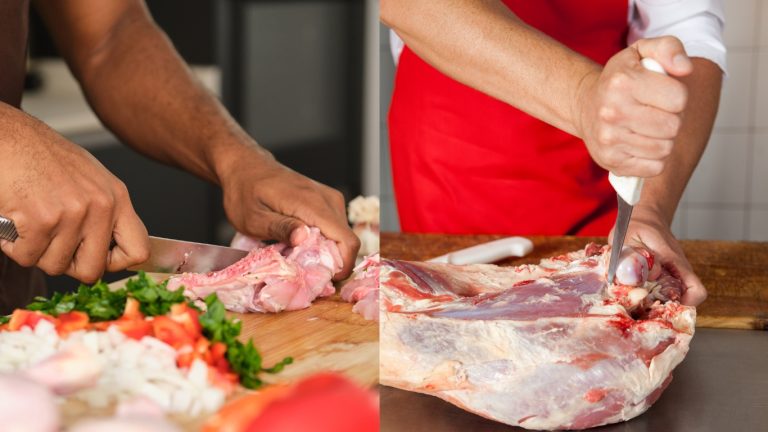Zwilling vs Wusthof: Which One is Right for You?
When comparing Zwilling and Wüsthof knives, consider their edged angles and manufacturing techniques. Wüsthof’s 14-degree angles offer sharper blades, while Zwilling’s 15-degree edges are easier to maintain. Zwilling uses innovative Sigmaforge technology, while Wüsthof relies on traditional forging.
Handle designs differ too; Zwilling’s thicker handles provide ergonomic support, while Wüsthof’s are narrower for a traditional grip.
Price-wise, Zwilling tends to be more accessible. Keep exploring to uncover more nuanced differences and features that suit your needs.
Key Takeaways
- Zwilling knives have a 15-degree edge angle, while Wüsthof features a sharper 14-degree angle for better initial sharpness.
- Wüsthof blades offer superior edge retention but can chip more easily compared to Zwilling’s softer, more easily sharpened blades.
- Zwilling employs Sigmaforge technology and ice-hardening processes, whereas Wüsthof relies on traditional forging techniques for knife production.
- Wüsthof knives tend to be more expensive, with premium sets around $1,000, while Zwilling offers more accessible options starting at $100.
- Both brands provide durable, high-quality knives with a lifetime warranty, ensuring long-term value for users.
Brand History and Heritage
When exploring the brand history and heritage of Zwilling and Wüsthof, it’s essential to recognize the deep roots both companies have in the German cutlery tradition.
Founded in Solingen, Zwilling dates back to 1731, with Peter Henckels establishing a legacy that would expand internationally in the 19th century.
By opening its first sales outlet in Berlin in 1818 and a New York branch in 1883, Zwilling laid the groundwork for a global presence. ZWILLING is recognized as one of the oldest brands globally, with nearly 300 years of heritage.
Wüsthof followed in 1814, contributing to this cutlery heritage. Both brands have balanced tradition with innovation, producing high-quality products recognized worldwide.
Their commitment to craftsmanship and durability has solidified their status as staples in kitchens, reflecting a rich history that continues to influence contemporary culinary practices.
Edge Angle and Sharpness Comparison
Both Zwilling and Wüsthof have established their reputations on craftsmanship and quality, which extends to their knife edge angles and sharpness.
Wüsthof knives feature a sharper 14-degree edge angle per side, giving them a slight advantage in sharpness right out of the box.
In contrast, Zwilling knives typically have a 15-degree angle, making them marginally less sharp initially. The proper sharpening angles are crucial for maximizing knife performance and longevity.
While both brands maintain excellent sharpness retention, Wüsthof’s harder blade material allows for longer-lasting sharpness but can be more prone to chipping. Conversely, Zwilling’s softer blades are easier to sharpen but may require more frequent maintenance.
Both brands utilize high carbon, rust-resistant steel in their blades, contributing to their overall durability and performance.
Manufacturing Techniques and Quality
The manufacturing techniques employed by Zwilling and Wüsthof greatly influence the quality and performance of their knives. Both brands utilize high-carbon, rust-resistant steel and forged blades for durability.
However, Zwilling’s Sigmaforge technology and ice-hardening process (Friodur) set it apart, enhancing strength and sharpness compared to Wüsthof.
Zwilling knives are known for their exceptional quality and craftsmanship, making them a preferred choice for professional chefs and serious home cooks.
| Feature | Zwilling | Wüsthof |
|---|---|---|
| Forging Process | Sigmaforge technology | Traditional forging |
| Rockwell Hardness | 56-58 | 58 |
| Manufacturing Location | Primarily Germany, some in Japan | Solingen, Germany |
Handle Design and Comfort
Handle design greatly affects your experience with Zwilling and Wüsthof knives.
Zwilling offers thicker, ergonomic handles with a distinct curve that supports your pinky, which may feel bulky for smaller hands. In contrast, Wüsthof’s narrower, smoother curves provide a more traditional grip but lack the pronounced support.
Both brands utilize durable materials, with synthetic options that resist heat and moisture. The full-tang design in both guarantees stability, while triple rivets enhance durability. Additionally, both brands are known for their high-quality knife craftsmanship, ensuring a reliable cutting experience.
Zwilling’s thicker, ergonomic handles provide pinky support, while Wüsthof offers a traditional grip with smoother curves.
Comfort is subjective, so the best approach is to test the grip personally. You’ll find that balance and weight distribution can considerably impact your handling experience, influencing precision and comfort during cutting tasks.
Price and Value Analysis
When evaluating the price and value of Zwilling and Wüsthof knives, you’ll notice distinct differences that can influence your purchasing decision.
Wüsthof generally carries higher price tags, particularly for premium offerings like the Epicure 12-piece set, which costs around $1,000. In contrast, Zwilling’s Professional S line ranges from $100 to $160, making it more accessible.
For budget-conscious buyers, Henckels International provides a solid entry point, with sets starting around $40. Wusthof maintains all manufacturing processes in Solingen, Germany, which contributes to its reputation for quality.
While Wüsthof is known for its sharpness and longevity, Zwilling’s global production may affect costs.
Frequently Asked Questions
Which Brand Offers a Better Warranty for Their Knives?
When evaluating warranty coverage for knives, you’ll want to take into account duration, eligibility, and what’s covered.
Zwilling offers a lifetime warranty as long as you purchase from authorized sellers, focusing on defects in materials and workmanship. It’s essential to recognize that normal wear and tear isn’t covered.
Wusthof, while similar, may have different terms. Analyzing these factors will help you determine which brand aligns best with your needs and expectations.
Are Replacement Parts Available for Both Brands?
Both brands provide replacement parts, but their availability differs.
Zwilling offers a wide range of original accessories and replacement parts for their kitchen appliances and cutlery through their official online shop, guaranteeing compatibility and quality.
Wüsthof also supplies replacement parts, mainly for knives and sharpening tools, but you might need to contact authorized sellers or Wüsthof directly for specific items.
Always check for compatibility to verify peak performance with your tools.
How Do I Properly Maintain and Sharpen These Knives?
Are your knives losing their edge?
To maintain and sharpen them effectively, start by hand-washing with warm, soapy water, avoiding abrasives. Dry them immediately to prevent rust.
Regularly hone your knives—use a 20° angle for one brand and 15° for another.
When they’re dull, sharpen with whetstones or diamond sharpeners. If you’re unsure, consider professional sharpening for a precise edge.
Proper care guarantees your knives remain sharp and reliable for years.
Can I Find Specialty Knives From Either Brand?
Yes, you can definitely find specialty knives from both brands.
Zwilling offers a diverse range, including Damascus steel and Santoku knives, while Wusthof features classic designs with precision-sharpened edges.
Both brands excel in quality and materials, ensuring durability and performance.
Whether you need a paring knife for detailed tasks or a specialized fillet knife, you’ll discover a wide variety that meets your culinary needs.
What Are the Most Popular Models From Each Brand?
If you thought picking a favorite knife was as easy as choosing a pizza topping, think again!
For popular models, you can’t go wrong with Zwilling’s Pro 8-inch Chef’s Knife, a go-to for chefs, and their 7-inch Hollow Edge Santoku for those quick dicing marathons.
On the Wusthof side, the Classic Ikon Chef’s Knife shines with its sleek design, while the Grand Prix II delivers comfort and precision.
Choose wisely, and your kitchen will thank you!
Choose Wisely, Slice Boldly and Cook with Confidence!
In the epic showdown of Zwilling vs. Wüsthof, you might find yourself in a culinary tug-of-war. Sure, one boasts a sharper edge, while the other cradles your hand like a gentle hug, but let’s face it either knife’s probably too good for your overcooked chicken.
Ultimately, it’s not just about which brand reigns supreme; it’s about how well you can wield that shiny steel while pretending to be a gourmet chef. Happy slicing!
